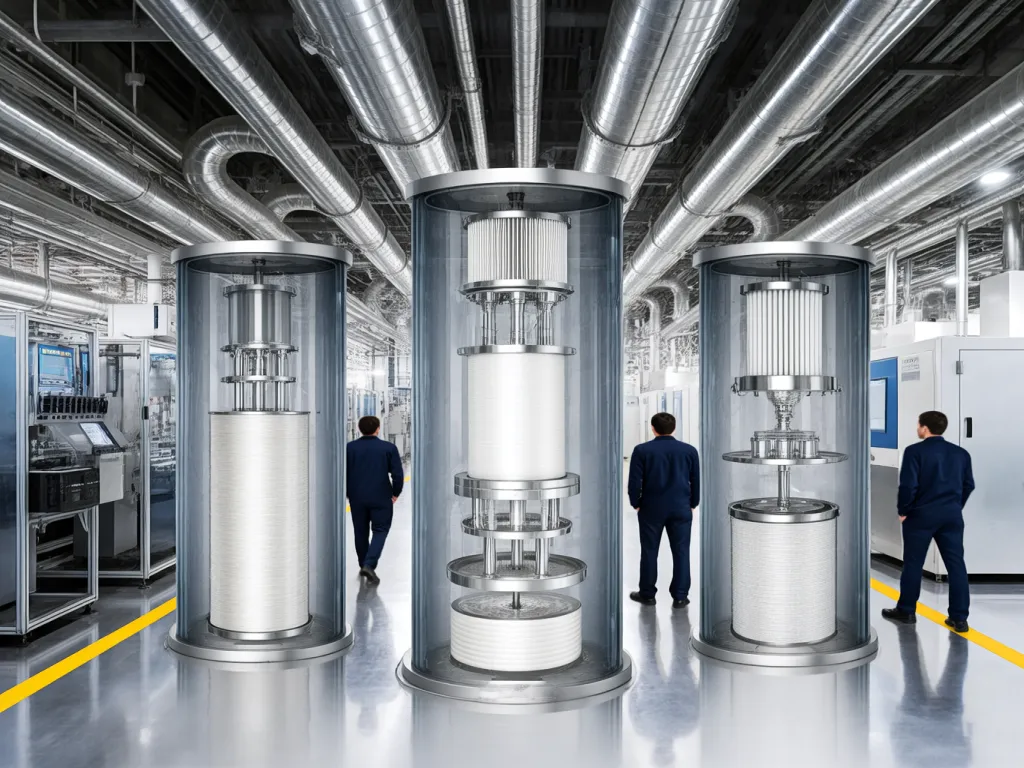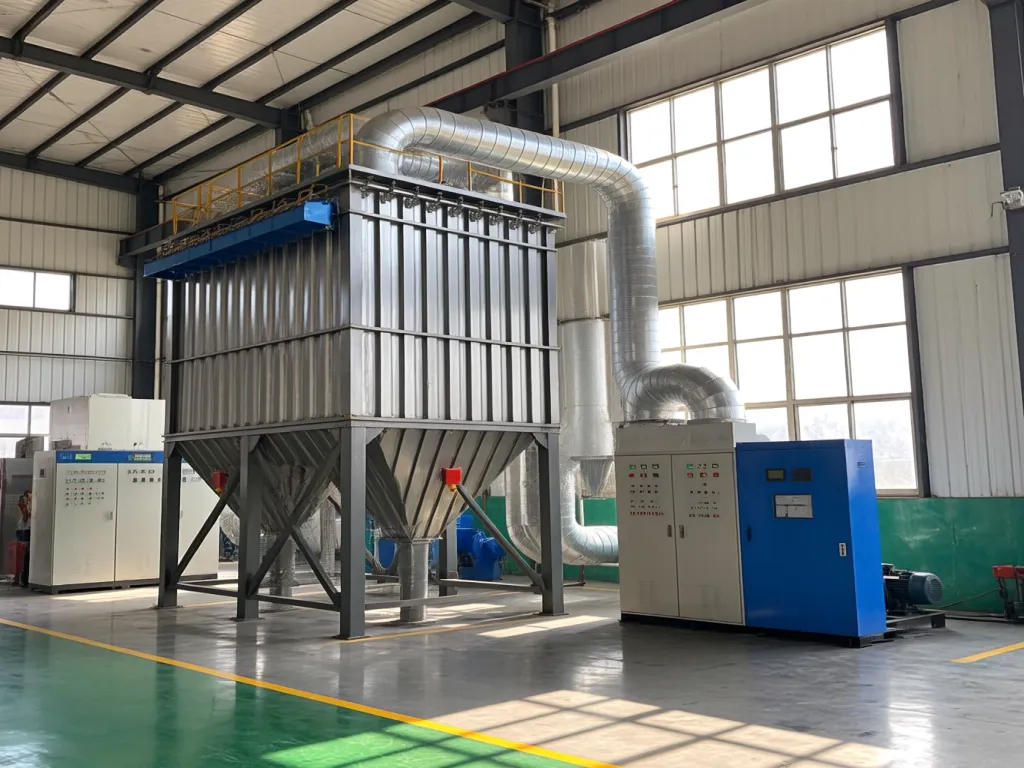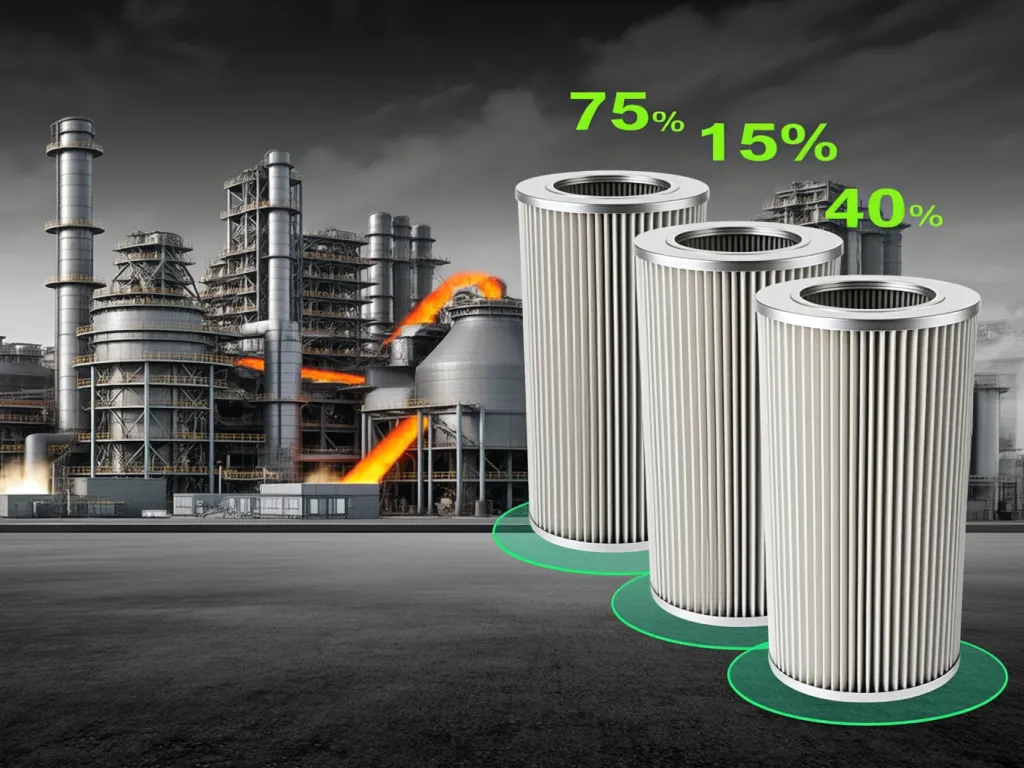Smart Design: Cut Costs with Bag Filter Baghouse

In industrial filtration, every dollar saved on maintenance or replacements is a win. Enter the game-changer: bag filter baghouse design. This isn’t just about catching dust—it’s about smart engineering that reduces downtime, cuts costs, and keeps your operations running smoothly. But what makes a design truly ‘efficient and durable’? Let’s unpack the secrets behind designs that save you money in the long run. Ready to rethink your filtration strategy?

Core Elements of Efficient and Durable Bag Filter Baghouse Design: Material Selection, Structural Design, and Manufacturing Processes
When it comes to industrial filtration, the design of a bag filter baghouse can make or break your operational efficiency and cost-effectiveness. If you’re a factory manager or a business owner looking to optimize your filtration system, understanding the core elements of efficient and durable bag filter baghouse design is crucial. Let’s dive into the three pillars that hold up this critical industrial equipment: material selection, structural design, and manufacturing processes.
First off, material selection is the bedrock of any durable bag filter baghouse. You wouldn’t build a house on sand, right? Similarly, you can’t expect a filtration system to last long or perform well if the materials used are subpar. The right materials ensure that your baghouse can withstand the harsh conditions of industrial environments—think high temperatures, corrosive chemicals, and abrasive particles. Polyester, for instance, is a popular choice for its resistance to abrasion and chemicals, making it ideal for handling a wide range of industrial dusts. For applications requiring enhanced filtration precision, consider exploring specialized options like our customizable single-layer filter bags or multi-pocket envelope filter bags. But wait, there’s more! PTFE (Polytetrafluoroethylene) membranes offer excellent chemical resistance and can operate at higher temperatures, making them suitable for more demanding applications. The key here is to match the material properties with your specific industrial needs. Ask yourself: What are the primary contaminants in my process? What temperatures will the baghouse be exposed to? Answering these questions will guide you toward the right material selection.
Moving on to structural design, this is where engineering meets practicality. A well-designed bag filter baghouse not only maximizes filtration efficiency but also minimizes maintenance and downtime. One critical aspect is the bag spacing and arrangement. Too close, and you risk clogging; too far apart, and you’re wasting valuable space and reducing filtration capacity. It’s a delicate balance that requires precise calculations. Another design consideration is the airflow pattern. A uniform airflow ensures that all bags are utilized equally, preventing premature wear on certain sections. Have you ever noticed uneven dust accumulation in your current system? That’s a telltale sign of poor airflow design. Additionally, the access doors and inspection ports should be strategically placed for easy maintenance. After all, a baghouse that’s hard to access is a baghouse that’s likely to be neglected, leading to reduced efficiency and higher costs down the line.
Last but not least, the manufacturing process plays a pivotal role in the durability and performance of your bag filter baghouse. Even the best materials and designs can fall short if the manufacturing is shoddy. Precision is key here. Every weld, every seam, and every fitting must be executed with the utmost care to prevent leaks and ensure structural integrity. Automated manufacturing processes, such as CNC (Computer Numerical Control) machining, can significantly enhance the accuracy and consistency of the components. But it’s not just about the machines; it’s also about the people behind them. Skilled technicians who understand the nuances of bag filter baghouse construction can identify potential issues before they become problems. Have you ever had a baghouse fail prematurely? Chances are, the manufacturing process could have been a contributing factor. Investing in a manufacturer with a proven track record and stringent quality control measures can save you a lot of headaches—and money—in the long run.
Material Selection: Beyond the Basics
Selecting the right material for your bag filter baghouse goes beyond just picking a durable fabric. It’s about understanding the specific demands of your industrial process. For instance, if you’re dealing with sticky or oily particles, a material with a smooth surface and low affinity for these substances, like certain types of polyester with special finishes, might be the way to go. On the other hand, if your process involves high temperatures, materials like fiberglass or aramid fibers, which can withstand extreme heat without losing their structural integrity, are worth considering. The key is to conduct a thorough analysis of your process conditions and consult with material experts to make an informed decision.
Structural Design: Engineering for Efficiency
Structural design isn’t just about making things look good; it’s about optimizing performance. Take, for example, the inlet design. A poorly designed inlet can lead to uneven air distribution, causing some bags to work harder than others and leading to premature failure. By incorporating features like diffusers or turning vanes, you can ensure a more uniform airflow, extending the life of your bags and improving overall efficiency. Another aspect is the clean air plenunum design. A well-designed plennum ensures that the cleaned air is evenly distributed back into the process, preventing re-entrainment of dust and maintaining consistent pressure drops across the system.
Manufacturing Processes: Precision Matters
The manufacturing process is where theory meets practice. Even the most meticulously designed bag filter baghouse can underperform if the manufacturing is not up to par. For instance, improper welding can lead to leaks, compromising the entire system’s efficiency. That’s why it’s essential to choose a manufacturer that employs advanced manufacturing techniques and has a rigorous quality control process in place. Look for certifications like ISO 9001, which indicate a commitment to quality and continuous improvement. Additionally, consider the manufacturer’s experience in your specific industry. A manufacturer with a proven track record in your sector is more likely to understand the unique challenges you face and deliver a product that meets your needs.

Optimizing Bag Filter Baghouse Design for Efficiency and Cost Reduction
When it comes to industrial filtration, the design of your bag filter baghouse can make or break your operational efficiency and bottom line. Let’s dive deep into how you can optimize this design to not only boost your filtration efficiency but also slash maintenance needs and replacement costs. You’re probably thinking, ‘How can a simple design tweak lead to such significant savings?’ Well, it’s all about understanding the interplay between material selection, structural design, and manufacturing precision.
First off, let’s talk about material selection. The right fabric for your filter bags is crucial. Imagine using a material that’s prone to clogging or wears out quickly—you’d be replacing bags left and right, not to mention the downtime and lost production. Instead, opt for materials like polyester, polypropylene, or even specialized aramids for high-temperature applications. These materials offer a balance of durability, chemical resistance, and filtration efficiency. For those seeking PTFE dust filter bags with similar high-performance properties, exploring specialized options can further enhance your filtration system. By choosing wisely, you’re setting the stage for longer bag life and fewer interruptions.
Now, onto structural design. The way your baghouse is laid out can dramatically affect airflow and, consequently, filtration efficiency. A well-designed baghouse ensures even air distribution, preventing hotspots that can lead to premature bag failure. Consider the shape and size of your bags, the spacing between them, and the overall chamber design. Innovations like pleated bags can increase filtration area without increasing footprint, boosting efficiency while keeping costs in check.
But it’s not just about the bags themselves. The cleaning mechanism plays a pivotal role too. Pulse-jet cleaning systems, for instance, are known for their effectiveness in dislodging dust without excessive wear on the bags. This means fewer cleanings are needed, extending bag life and reducing maintenance frequency. It’s a win-win situation: cleaner air output and lower operational costs.
Let’s not forget about manufacturing precision. Even the best design can fall short if not executed with care. Precision in cutting, sewing, and assembling filter bags ensures they fit perfectly in the baghouse, minimizing leaks and maximizing filtration area. It’s the little details, like reinforced seams and proper stitching, that can significantly enhance bag durability and performance.
So, how do all these elements come together to reduce maintenance and replacement costs? By choosing materials that last longer, designing a baghouse that optimizes airflow and cleaning, and ensuring manufacturing excellence, you’re minimizing the need for frequent interventions. Fewer bag replacements mean less downtime, lower material costs, and ultimately, a healthier bottom line.
Think about it this way: every dollar saved on maintenance and replacements is a dollar that can be reinvested into your business. Whether it’s upgrading other equipment, expanding production, or simply boosting your profit margins, the benefits are tangible and far-reaching. And the best part? These optimizations don’t require a complete overhaul of your existing system. Often, small, strategic changes can yield significant results.
In conclusion, optimizing your bag filter baghouse design is not just about improving filtration efficiency—it’s a holistic approach to reducing operational costs. By focusing on material selection, structural design, cleaning mechanisms, and manufacturing precision, you can create a system that runs smoother, lasts longer, and saves you money in the long run. Isn’t it time you gave your baghouse the attention it deserves?
Material Selection: The Foundation of Durability
Choosing the right material for your filter bags is the first step towards a durable and efficient baghouse. Materials like polyester and polypropylene offer excellent resistance to chemicals and abrasion, ensuring longevity. For high-temperature environments, aramids can withstand extreme conditions without compromising filtration performance. If you’re interested in customizable single-layer filter bags tailored to specific industrial needs, exploring these options can provide additional flexibility. By investing in quality materials, you’re setting the stage for fewer replacements and lower maintenance costs.
Structural Design: Maximizing Efficiency
The layout of your baghouse affects airflow and filtration efficiency. A well-designed system ensures even air distribution, preventing clogging and premature bag failure. Consider the use of pleated bags to increase filtration area without expanding the baghouse footprint. For those seeking advanced filtration solutions, multi-pocket envelope filter bags offer enhanced surface area and durability. This not only boosts efficiency but also keeps costs in check by utilizing space more effectively.
Cleaning Mechanisms: Prolonging Bag Life
The cleaning system you choose can significantly impact bag life and maintenance needs. Pulse-jet cleaning, for instance, is highly effective in removing dust without excessive wear. This means fewer cleanings are required, extending the life of your filter bags and reducing the frequency of maintenance interventions.
Manufacturing Precision: The Devil’s in the Details
Precision in manufacturing filter bags is crucial for ensuring a perfect fit in the baghouse. This minimizes leaks and maximizes filtration area, enhancing overall performance. Details like reinforced seams and proper stitching can significantly boost bag durability, reducing the likelihood of premature failure and the associated costs.

Real-World Success Stories: How Efficient and Durable Bag Filter Baghouse Designs Cut Industrial Filtration Costs
When it comes to industrial filtration, the stakes are high. For factory managers and business owners, every dollar saved on operational costs can mean a significant boost to the bottom line. But how can you ensure that your filtration system is not only efficient but also cost-effective in the long run? The answer lies in choosing a bag filter baghouse design that prioritizes durability and efficiency. Let’s dive into some real-world examples where these designs have made a tangible difference.
Case Study 1: Steel Manufacturing Plant
In the Midwest, a steel manufacturing plant faced frequent filter bag replacements due to a harsh operating environment. The materials’ exceptional resistance to high temperatures and chemical corrosion extended the filter bags’ lifespan significantly.
Case Study 2: Cement Production Facility
A cement production facility in Europe struggled with uneven airflow distribution, causing localized overloading and premature filter bag failure. By implementing a baghouse design with optimized airflow patterns and a modular filter bag arrangement, they achieved uniform filtration, extending filter bag lifespan and improving overall efficiency by 15%. The cost savings were substantial, amounting to thousands of euros annually.
Case Study 3: Chemical Processing Plant
A chemical processing plant in Asia dealt with corrosive gases, leading to rapid filter bag failure. The adoption of a baghouse design with corrosion-resistant filter media and a robust pulse-jet cleaning system increased filter bag lifespan from weeks to over a year. The plant reported a 40% reduction in overall filtration costs, highlighting the importance of choosing the right design for specific operational challenges.
From material selection to real-world cost savings, the right bag filter baghouse design isn’t just a purchase—it’s an investment in efficiency. By prioritizing durability, optimizing airflow, and learning from proven case studies, you’re not just cutting costs; you’re future-proofing your operations. So, why settle for outdated designs that drain your budget? Dive deeper into how a tailored baghouse solution can transform your industrial filtration. Ready to upgrade? Your bottom line will thank you.

